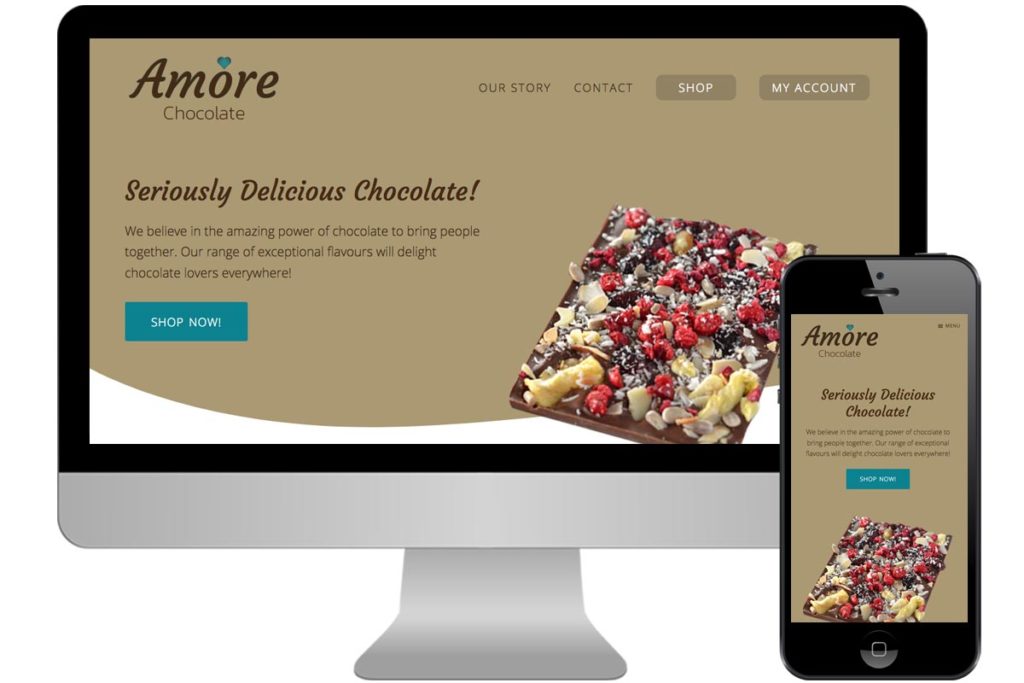An online presence is essential for every small business as consumers use the Internet for all of their needs. Therefore, having an effective website design for your small business is imperative, but achievable in five easy steps.
If you own a small business you’re probably already aware of how important it is to have a website. Consumers use the Internet for everything and being online can open your company up to new markets and consequently greater profits.
However, getting your first small business website design up and running can be somewhat daunting.
1. Establish the purpose of your small business website
Deciding on the purpose of your website might seem like an easy step, but plenty of businesses get this stage wrong. Consequently, knock on effects are felt further down the line.
Careful consideration needs to be given to telling the visitor what the business does and the problems that its products and services solve. Consumers are often searching for answers to a problem. Immediately highlighting the solutions that your small business provides consequently goes a long way to converting browsers in to buyers.

Once you have established what problems your small business website will solve, you can move on to establish how it will do this. The site could be a brochure or small business website that conveys information. For a business that provides services, a booking website may therefore be preferred. For retailers, an Ecommerce website will help grow the client base and increase sales.
2. Choose a domain name
A domain name is your website’s address and thus what you’ll be sharing and giving to clients and potential customers. The domain name is your small business website’s virtual address on the Internet.
A domain name needs to be short, simple, easy to remember and relevant to your business. Take some time to consider some options and check if it is available with a domain registrar.
3. Choose a small business website hosting company
Every website needs hosting so that it can be published on the Internet. The website’s data is stored on servers that visitors access when they type or click on the domain name.
Having good, reliable website hosting is imperative for a small business for three vital reasons.
Firstly, servers need to be constantly up and working so that visitors and therefore potential clients aren’t left looking at a blank screen.
Secondly, speed is critical for two reasons. Fast website hosting returns pages much more quickly, which therefore results in shorter load times. Website visitors are thus less likely to leave or close their browser window. Speed is also vital to rank well in search engines. Quickly returned pages means that search engines can crawl faster and the website will consequently rank higher.
The third important factor is location. Cheap website hosting can often be located outside of the country where a small business’ customers are. The knock-on effect is that not only does the website load more slowly due to the distance, but data is also held outside of the jurisdiction that you know and trust.
4. Build your website and content
Conveying the right message is important at this stage. Having established the purpose of your website in step one, now the structure can be designed and the content of the pages produced. Remember to focus on your website visitor at all times and try to answer the questions that they will have throughout your content.
The website for your small business should be designed with the content in mind and the journey that you therefore want the customer to take. The objective could be to guide them to a contact form or to make a sale, but the process needs to be mapped out beforehand.
Good content planning should also include search engines. Optimising your small business website design for your keywords should also form a part of your content strategy. Good Search Engine Optimisation (SEO) can give a small business a real boost in visitors and thus sales.
Investing in a copywriter at this stage of the small business website design process can be a good idea to get properly optimised text for search engines.
What’s more, if your small business logo is either out-dated or still on a sketchpad, a good designer can help to create one that clients will quickly identify with.
5. Launch and maintain your website
Once the website is built, it is a good idea to test it across all the major browsers – Chrome, Firefox, Safari, Microsoft Edge – to iron out any issues. Also test the website on a variety of screen sizes to ensure it is responsive for tablets and mobile phones.
Launching your small business website design is the first stage to establishing an online presence. Once live, the website needs to be submitted to search engines for indexing. Equally important is to incorporate an analytics program so that traffic to the website can be analysed.

Website maintenance is an area that is often overlooked. Regularly updating and adding to the content or including a blog is one way to ensure that you establish and grow an online presence.
Maintenance also takes the form of checking that everything is working like a well-oiled machine under the hood. Cleaning out the database, updating core files, optimising images, sorting bugs, indexing issues and making performance tweaks are an equally important part of the process.
Five step plan to a small business website design
Having a small business website is a great vehicle to increase a company’s exposure to potential customers and markets. Building and launching the site can be a daunting experience, but highly rewarding if implemented in the correct way.
If you’re not sure where to start, we can help with getting your small business online. Take a look at our range of small business website packages. What’s more, we can also provide domain name registration, company branded emails and a website hosting service.
Once your small business website design is live, we also offer a maintenance package to keep everything ticking over so that you can focus on running your business.
